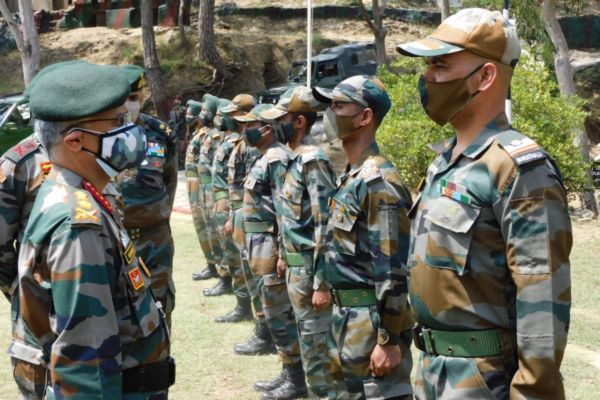For First Time in 250 Yrs, India to Bring About Extensive Changes in Defence Land Policy
In a major defence land reform, the Narendra Modi government has approved new rules that would allow equal value infrastructure (EVI) development for armed forces in return for the land procured from them for public projects or other non-military activities.
Earlier, in the British era the policy of using defence land in India for any purpose other than the military was prohibited since the British set up the first cantonment in Bengal's Barrackpore in 1765, a report in Moneycontrol said.
Later in April 1801, the East India Company's Governor General-in-Council ordered, 'No bungalows and Quarters at any of the Cantonments shall be allowed to be sold or occupied by any person who does not belong to the Army'.
However, the policy underwent a change in 2021 as the government is considering defence land reforms and also working towards finalising a Cantonment Bill 2020, which aims to provide for development in cantonment zones.
Ministry of Defence (MoD) officials speaking on the condition of anonymity said that defence land needed for major public projects - like building of metro, roads, railways, and flyovers - could only be exchanged for land of equivalent value, or after payment of market prices.
Under the new rules, eight EVI projects have been identified, which the acquiring party can provide infrastructure for in coordination with the concerned Service.
They include building units and roads, among other projects. According to the new regulations, the value of land would be determined by a committee headed by the local military authority - in cases under cantonment zones. For land outside cantonments, the district magistrate will decide on the rate.
The Ministry of Finance has pegged monetising defence land as the only way to generate revenue for the proposed non-lapsable modernisation fund.
Officials said a draft cabinet note on setting up the defence modernisation fund is currently undergoing inter-ministerial consultations, and a final decision is expected soon, following which it will be placed before the Union cabinet for approval.
'Since defence lands are in the most prime areas all over the country, over the years, politicians and civic officials have demanded that they be used for undertaking developmental activities. Now it seems, it is happening,' Says Lt Gen HS Panag (Retd) said.
All along the GT Road - from Delhi to Peshawar for instance - there are camping grounds and old depots that are not in use any longer, built by the British Indian Army during the Second World War when troops had to be moved from one place to the other.
'You can monetise the land if the army is not using it and provided, they are given alternate land,' Panag added.
The Department of Military Affairs (DMA), headed by Chief of Defence Staff Gen Bipin Rawat, had told the government last year that proceeds from defence land monetisation would be hardly adequate to meet the armed forces' requirements.
Others, like Lt Gen Satish Dua (Retd) believe that surplus defence land can be monetised for modernisation of the armed forces. 'The capital generated should form a non-lapsable kitty for modernisation only (not revenue expenditure). A firm recommendation to this effect has been made to the 16th Finance Commission,' he reportedly said.
Dua, however, points out that monetisation of land under use in cantonments is not being suggested. 'Only the land which the Army is forced to accept in some unviable location as barter, may as well be monetized.'

